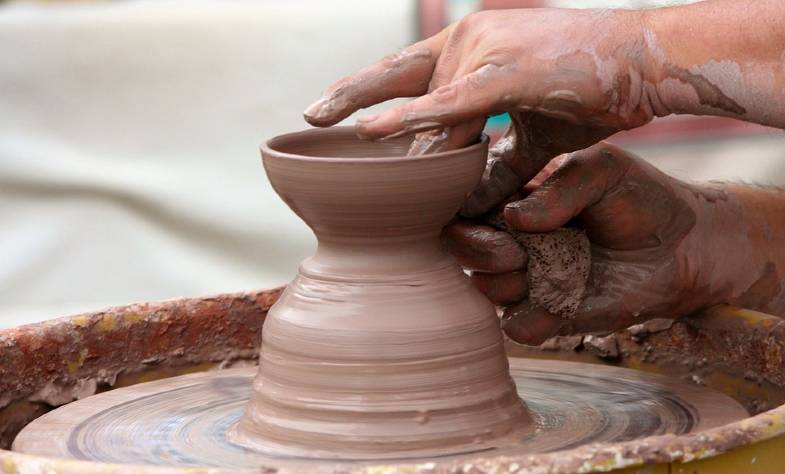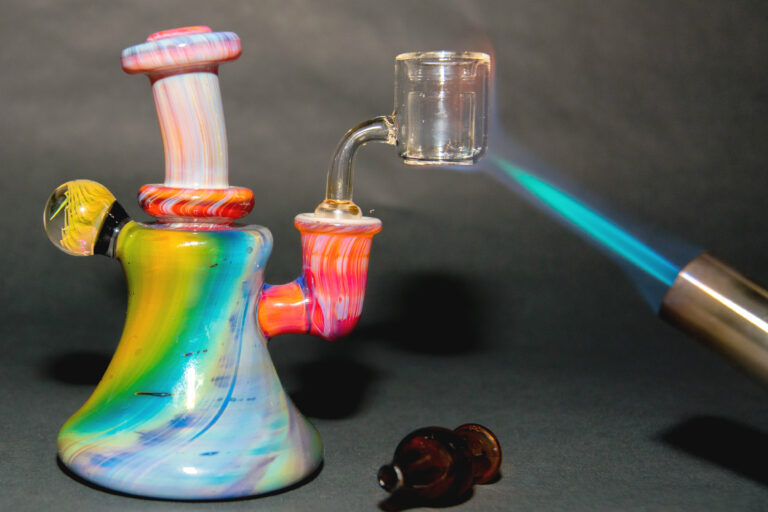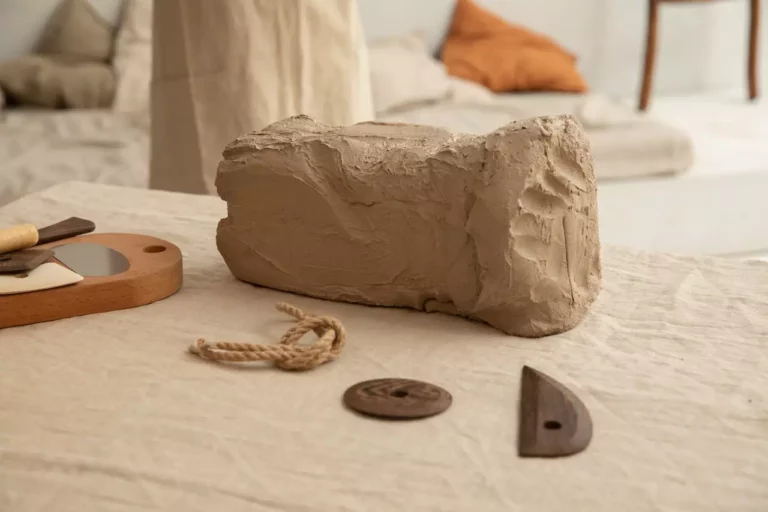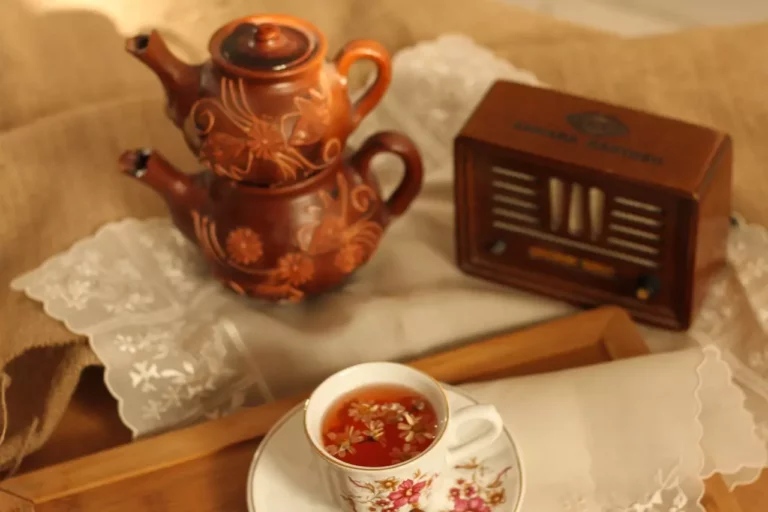The Art of Pottery: From Clay to Creation
Pottery is a fascinating art form that has been around for thousands of years. It involves creating objects, usually vessels or decorative pieces, from clay and other materials. In this article, we will explore the process of how pottery is made, from the raw materials used to the various techniques and tools involved.
Introduction
Pottery holds a significant place in human history and culture. It not only serves practical purposes but also showcases artistic expression. Dating back to ancient civilizations, pottery has evolved over time, encompassing different styles and techniques.
Types of Pottery
There are three main types of pottery: earthenware, stoneware, and porcelain. Earthenware is made from clay that is fired at a relatively low temperature, resulting in a porous and less durable material. Stoneware is fired at a higher temperature, making it denser and more durable. Porcelain is the most refined and delicate form of pottery, known for its translucency and white color.
Raw Materials Used in Pottery
The primary raw material used in pottery is clay. Clay comes in different types and qualities, each suitable for specific purposes. In addition to clay, various additives and fillers are used to enhance the properties of the pottery, such as plasticity, strength, and color. Glazes and pigments are also employed to add color and provide a protective layer.
Preparation of Clay
The process of preparing clay involves mining and extraction, followed by weathering and aging. Clay is then wedged and kneaded to remove air bubbles and achieve a uniform consistency. This ensures that the clay is ready for shaping and molding.
Pottery Techniques
There are several techniques used in pottery. Hand-building techniques involve shaping clay without the use of a pottery wheel, including methods like pinching, coiling, and slab construction. Wheel throwing, on the other hand, involves using a pottery wheel to shape the clay. Slipcasting is another technique that uses liquid clay poured into molds.
Shaping the Pottery
Once the clay is prepared, it is shaped using various methods. Pinching involves using fingers and thumbs to shape the clay by pinching and squeezing. Coiling involves creating long, snake-like coils that are stacked and joined together to form the desired shape. Slab construction involves rolling out flat sheets of clay and cutting them into shapes that are then assembled.
Drying and Firing
After shaping the pottery, it goes through a drying process. The clay reaches a leather-hard stage where it is firm but still slightly damp. It is then ready for the first firing, known as bisque firing, which hardens the clay and prepares it for glazing. Once bisque fired, glazes are applied to the pottery to add color and surface finish.
Kilns and Firing
Firing the pottery is a critical step in the process. Different types of kilns, such as electric, gas, or wood-fired, are used to achieve the desired temperature for firing. The firing process involves carefully controlling the temperature and duration to ensure the pottery reaches the desired strength and aesthetic quality.
Decoration and Finishing
Decorating pottery is a creative aspect of the process. Techniques like carving, incising, painting, and glazing are employed to add patterns, textures, and colors to the pottery surface. Surface treatments like burnishing or applying slips can further enhance the appearance of the pottery.
Pottery Tools and Equipment
Various tools and equipment are used in pottery making. A pottery wheel is essential for wheel throwing, while kilns are necessary for firing the pottery. Other tools include clay cutters, sculpting tools, brushes, and various glazing and decorating equipment.
Pottery Studios and Workspaces
Pottery studios and workspaces are set up to facilitate the pottery-making process. They need to be well-organized, equipped with the necessary tools and materials. Safety precautions, such as proper ventilation and protective gear, should also be taken into consideration.
Contemporary Pottery
In contemporary pottery, there are countless styles, techniques, and trends. From traditional forms to modern and experimental designs, pottery continues to evolve. Many talented artists specialize in pottery, and their unique creations contribute to the rich and diverse world of ceramics.
Preservation and Conservation of Pottery
Preserving and conserving pottery is crucial for maintaining its integrity and historical value. Restoration and repair techniques are used to fix damaged pieces while maintaining their authenticity. Proper storage and display methods are implemented to protect pottery from environmental factors and ensure its longevity.
Cultural Significance of Pottery
Pottery holds cultural significance in various societies around the world. It is often intertwined with traditions, rituals, and symbolism. Different cultures have their distinct pottery styles and techniques that reflect their heritage and artistic expressions.
FAQs (Frequently Asked Questions)
How long does it take to make a piece of pottery?
The time required to make a piece of pottery varies depending on its complexity and size. It can range from a few hours to several weeks, considering the various stages of preparation, shaping, drying, firing, and finishing.
Can pottery be made without a pottery wheel?
Absolutely! Hand-building techniques allow pottery to be created without the use of a wheel. Methods like pinching, coiling, and slab construction offer alternative ways to shape clay.
What are some famous pottery artists?
There are many renowned pottery artists worldwide, including Pablo Picasso, Bernard Leach, Lucie Rie, and Beatrice Wood, who have made significant contributions to the field of ceramics.
How do I care for and clean pottery?
Pottery should be handled with care to avoid breakage. It can be cleaned using mild soap and water, and a soft cloth or sponge. Avoid using abrasive materials or harsh chemicals that may damage the pottery’s surface.
Can I make pottery at home without a kiln?
While firing pottery in a kiln is the ideal way to achieve durability and strength, there are air-dry clays available that don’t require firing. These clays can be shaped and left to dry naturally, but they may not have the same properties as traditionally fired pottery.
Conclusion
The art of pottery involves a meticulous process that transforms clay into beautiful and functional objects. From preparing the clay to shaping, firing, and decorating, each step requires skill and creativity. Pottery has a rich history and cultural significance, and it continues to captivate people with its beauty and craftsmanship.





